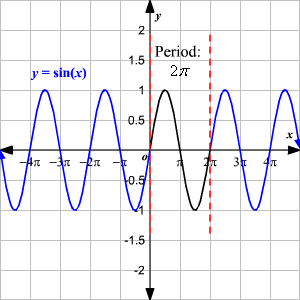Here’s a persuasive advertisement for ghostwriting services for calculus:
**Get Ahead in Calculus with Our Expert Ghostwriting Services**
Are you struggling to grasp the squeeze principle in calculus? Do you find yourself lost in a sea of equations and theorems? Our expert ghostwriting services are here to help!
Our team of seasoned calculus writers will craft high-quality, customized assignments, essays, and research papers that will help you excel in your calculus course. With our expertise, you’ll gain a deep understanding of the squeeze principle and its applications, including:
* Convergence properties of sequences and series
* Sine function examples and case studies
* Advanced calculus concepts and techniques
**Why Choose Our Ghostwriting Services?**
* **Expertise**: Our writers hold advanced degrees in mathematics and have years of experience in calculus and related fields.
* **Quality**: We guarantee high-quality, well-researched, and plagiarism-free content that meets your specific requirements.
* **Timeliness**: We deliver on time, every time, so you can meet your deadlines with confidence.
* **Confidentiality**: Your privacy is our top priority, and we ensure that all work is kept confidential and secure.
**Don’t Let Calculus Hold You Back**
With our ghostwriting services, you can:
* Boost your grades and confidence
* Focus on other important aspects of your academic life
* Enjoy a stress-free calculus experience
**Order Now and Get Ahead in Calculus!**
Contact us today to learn more about our ghostwriting services and take the first step towards calculus success!
**Example 23**.: Consider the sequence \(\left\{\frac{\sin n}{n}\right\}\). Since \(|\sin n|\leq 1\), we know
\[-\frac{1}{n}\leq\frac{\sin n}{n}\leq\frac{1}{n}.\]
Both the right- and left-hand sequences converge to zero as \(n\to\infty\); the sequence in the middle is “squeezed” to the same limit.
**Remark 10**.: The squeeze principle can be used to conclude more convergence properties for sequences. For example, if \(x_{n}\to L\), then \(|x_{n}|\to|L|\) too. Notice that \(x_{n}\to L\) implies \(x_{n}-L\to 0\). The _reverse triangle inequality_ implies
\[0\leq||x_{n}|-|L||\leq|x_{n}-L|.\]
The right-hand sequence tends to zero so that by the squeeze principle \(|x_{n}|\to|L|\). Similarly if \(|x_{n}|\to 0\) and \(\{y_{n}\}\) is another _bounded_ sequence, then \(x_{n}y_{n}\to 0\) as well. This follows from the inequality
\[0\leq|x_{n}y_{n}|\leq M|x_{n}|,\]
where the boundedness of \(\{y_{n}\}\) implies we can choose \(M\) so that \(|y_{n}|\leq M\) for all \(n\), and \(|x_{n}y_{n}|\to 0\) if and only if \(x_{n}y_{n}\to 0\).
We showed in Theorem 10, part b) that convergent sequences are bounded. The converse of this statement is not true. However, if a bounded sequence is monotone, then in fact it converges. Recall that a sequence is called _monotonic_ if it is either nondecreasing or nonincreasing; that is,
\[x_{1}\leq x_{2}\leq x_{3}\leq\ldots\qquad\text{or}\qquad x_{1}\geq x_{2}\geq x_ {3}\geq\ldots.\]
The following Monotone Convergence Theorem is very useful because it simply asserts the convergence of a sequence without explicitly finding its actual limit.
**Theorem 13** (Monotone Convergence Theorem).: _Every monotonic and bounded sequence of real numbers is convergent._
Proof
: Let \(\{x_{n}\}\) be monotone and bounded. Suppose \(\{x_{n}\}\) is nondecreasing (the nonincreasing case is handled similarly). Then by hypothesis its range \(\{x_{n}:\quad n\in\mathbb{N}\}\) is bounded, so we can set \(\lambda=\sup\{x_{n}:\ n\in\mathbb{N}\}\). We need a candidate for the limit, and it is reasonable to claim \(\lim\limits_{n\to\infty}x_{n}=\lambda\). To prove this, let \(\epsilon>0\). Since \(\lambda\) is an upper bound for \(\{x_{n}:\ n\in\mathbb{N}\}\), we have \(x_{n}\leq\lambda\) for all \(n\in\mathbb{N}\), but \(\lambda-\epsilon\) is not an upper bound for each \(\epsilon>0\), i.e., there is a point in the sequence \(x_{N}\) such that \(x_{N}>\lambda-\epsilon\) (Figure 17).
Since the sequence \(\{x_{n}\}\) is nondecreasing, it follows that \(x_{n}\geq\lambda-\epsilon\) for all \(n\geq N\). Combining this with the inequality \(x_{n}\leq\lambda\),
\[\lambda-\epsilon implies \(|x_{n}-\lambda|<\epsilon\) for all \(n\in\mathbb{N}\), which gives \(x_{n}\to\lambda\) as desired. Later we will see the Monotone Convergence Theorem will be a great help for the study of infinite series. In the coming sections we will consider certain properties of the real line that may be defined either in terms of subsets of \(\mathbb{R}\) or in terms of sequences. The Nested Interval Theorem is useful in this regard. In our discussion of sequences so far we considered sequences of real numbers. However, one can have sequences in \(\mathbb{R}^{2}\) or \(\mathbb{R}^{3}\) or in general in the \(n\)-dimensional vector space \(\mathbb{R}^{n}\) as well. In the following, we consider sequences in \(\mathbb{R}^{n}\) and show the connection of sequences in \(\mathbb{R}\) and \(\mathbb{R}^{n}\). **Definition 12**.: **Euclidean \(n\)-space**, denoted \(\mathbb{R}^{n}\), consists of all ordered \(n\)-tuples of real numbers. \[\mathbb{R}^{n}=\{(x_{1},\ldots,x_{n}):\quad x_{1},\ldots,x_{n}\in\mathbb{R}\}.\] Figure 17: Monotone and bounded sequence Clearly \(\mathbb{R}^{n}=\mathbb{R}\times\cdots\times\mathbb{R}\) (\(n\)-times) is the Cartesian product of \(\mathbb{R}\) with itself \(n\)-times. Elements of \(\mathbb{R}^{n}\) are usually denoted by single letters that stand for \(n\)-tuples such as \(x=(x_{1},\ldots,x_{n})\), and we speak of \(x\) as a **point** in \(\mathbb{R}^{n}\). Addition and scalar multiplication of \(n\)-tuples are defined as \[(x_{1},\ldots,x_{n})+(y_{1},\ldots,y_{n})=(x_{1}+y_{1},\ldots,x_{n}+y_{n})\] and \[a(x_{1},\ldots,x_{n})=(ax_{1},\ldots,ax_{n})\quad\text{for}\quad a\in\mathbb{R}.\] The **distance** or the **norm** between two elements of \(x,y\in\mathbb{R}^{n}\) is a real number \[||x-y||=\left(\sum_{i=1}^{n}(x_{i}-y_{i})^{2}\right)^{\frac{1}{2}}.\] **Proposition 1**.: _If \(x=(x_{1},\ldots,x_{n})\) and \(y=(y_{1},\ldots,y_{n})\) are vectors in \(\mathbb{R}^{n}\) and we let \(\rho(x,y)=\max\{|x_{1}-y_{1}|,|x_{2}-y_{2}|,\ldots,|x_{n}-y_{n}|\}\), then_ \[\rho(x,y)\leq||x-y||\leq\sqrt{n}\rho(x,y).\] : Since \[|x_{i}-y_{i}|=\sqrt{|x_{i}-y_{i}|^{2}}\leq\sqrt{\sum_{i=1}^{n}|x_{i}-y_{i}|^{2 }}=||x-y||,\] we have \(\rho(x,y)\leq||x-y||\), and \[||x-y||=\sqrt{\sum_{i=1}^{n}|x_{i}-y_{i}|^{2}}\leq\sqrt{\sum_{i=1}^{n}\max_{i }|x_{i}-y_{i}|^{2}}\leq\sqrt{n\rho(x,y)^{2}}=\sqrt{n}\rho(x,y)\] gives the right-hand inequality. We will use the above proposition to prove the following theorem. **Theorem 14** (Convergence in \(\mathbb{R}^{n}\)).: _Suppose \(\{x_{k}\}\) is a sequence in \(\mathbb{R}^{n}\) and \(x_{k}=(x_{k}^{1},x_{k}^{2},\ldots,x_{k}^{n})\) for \(k\geq 1\). Then \(\{x_{k}\}\) converges to \(x\) in \(\mathbb{R}^{n}\) if and only if each sequence of coordinates converges to the corresponding coordinate of \(x\) as a sequence in \(\mathbb{R}\). That is,_ \[x_{k}\to x\quad\text{in}\ \,\mathbb{R}^{n}\quad\text{if and only if}\quad\lim_{k\to\infty}x_{k}^{i}\to x^{i}\quad\text{in}\ \,\mathbb{R}\ \text{ for each}\ i=1,2,\ldots,n.\] Note that this theorem can be written compactly as : Let \(\rho(x,y)=\max\{|x_{1}-y_{1}|,|x_{2}-y_{2}|,\ldots,|x_{n}-y_{n}|\}\), then \[\rho(x,y)\leq||x-y||\leq\sqrt{n}\rho(x,y)\] by the above proposition. Suppose \(\{x_{k}\}\) converges to \(x\) in \(\mathbb{R}^{n}\) and \(1\leq j\leq n\). Let \(\epsilon>0\) be given; then there is an \(N\) such that \(||x_{k}-x||<\epsilon\) whenever \(k\geq N\). Therefore, for such \(k\) we have \[|x^{j}-x_{k}^{j}|\leq\rho(x,x_{k})\leq||x-x_{k}||<\epsilon,\] and thus \(x_{k}^{j}\to x^{j}\) in \(\mathbb{R}\). To prove the converse suppose that for each \(j=1,2,\ldots,n\), we have \(\lim\limits_{k\to\infty}x_{k}^{j}\to x^{j}\) in \(\mathbb{R}\). Let \(\epsilon>0\). For any \(\epsilon_{*}>0\), there exist integers \(N_{1},N_{2},\ldots,N_{n}\) such that \[|x^{1}-x_{k}^{1}|<\epsilon_{*}\quad\text{whenever}\quad k\geq N_{1}\] \[|x^{2}-x_{k}^{2}|<\epsilon_{*}\quad\text{whenever}\quad k\geq N_{2}\] \[\vdots\qquad\qquad\qquad\vdots\] \[|x^{n}-x_{k}^{n}|<\epsilon_{*}\quad\text{whenever}\quad k\geq N_{n}.\] Now set \(N=\max\{N_{1},N_{2},\ldots,N_{n}\}\). Then for \(k\geq N\), \[||x-x_{k}||\leq\sqrt{n}\rho(x,x_{k})\leq\sqrt{n}\epsilon_{*}.\] Thus by taking \(\epsilon_{*}=\dfrac{\epsilon}{\sqrt{n}}\), we obtain
Proof
Proof

发表回复